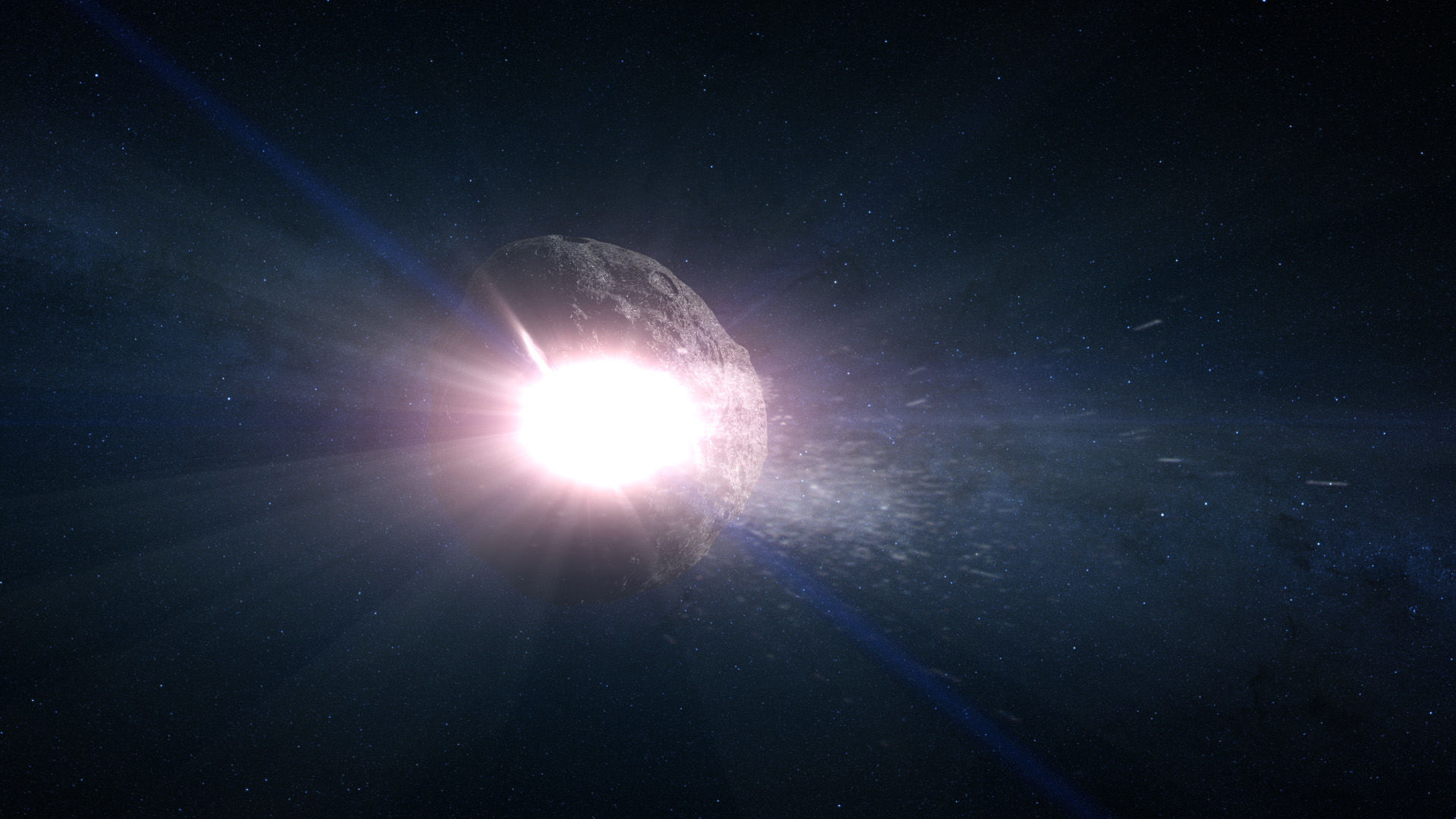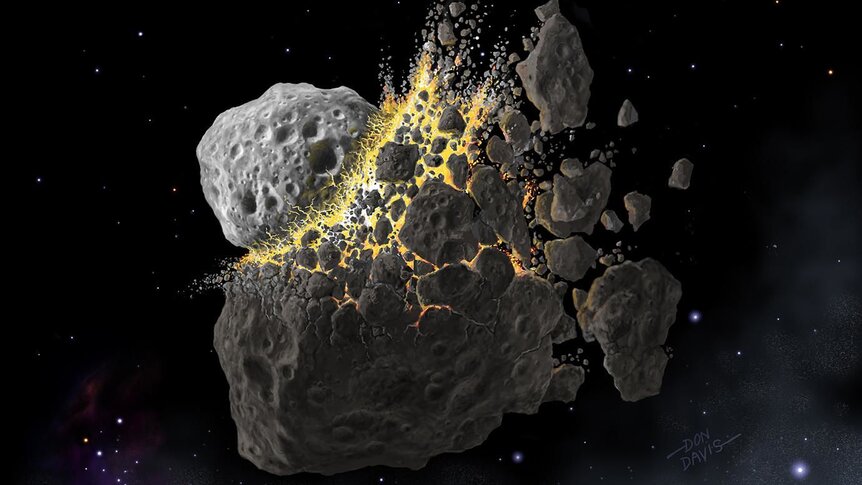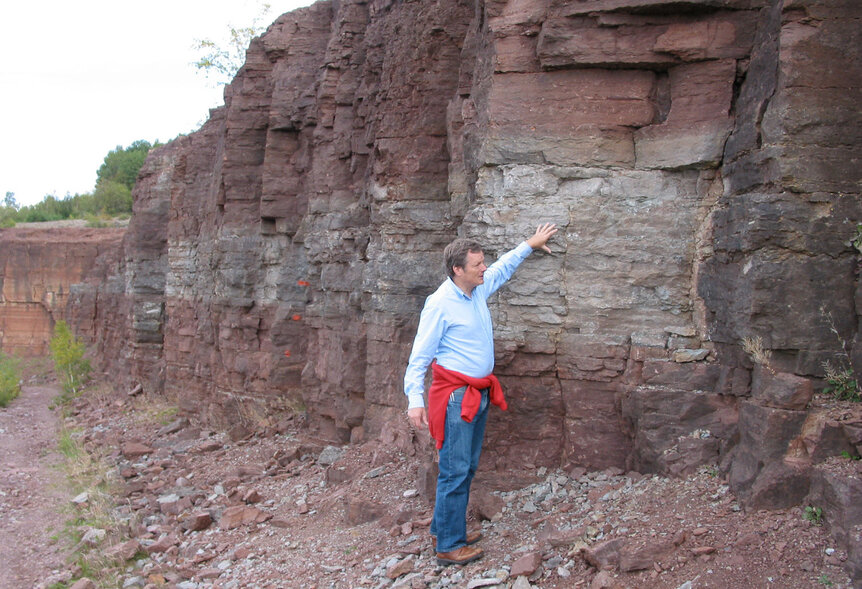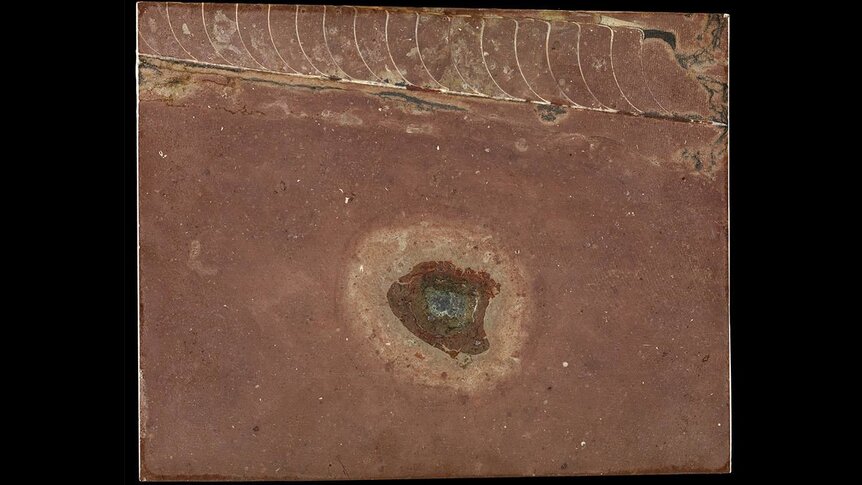Create a free profile to get unlimited access to exclusive videos, sweepstakes, and more!
466 million years ago, a huge asteroid impact helped life on Earth be fruitful and multiply

466 million years ago, there was a very, very large asteroid impact. But, despite what you're thinking, it actually helped life on Earth be fruitful and multiply.
And that's because the asteroid impact wasn't on Earth. It was hundred of millions of kilometers away, in the inner asteroid belt.
Wait, what? How would that affect us here?
A new paper by a team of scientists points the accusatory finger at… dust. A lot of it, blasted outward when two big asteroids collided. This dust made its way to Earth, blocked a significant fraction of warming sunlight, started an ice age, and that put stress on marine environments which caused a burst of evolutionary diversity.
OK, hang tight. There are a few things going on here, so we need to take a step back to see how this all ties together.
For some time now paleontologists have been aware that about 465 million years ago, during the late part of the Ordovician Period, invertebrate marine life on Earth had a burst of diversification. Relatively suddenly (over some millions of years), the forms of life that had evolved and flourished from the Cambrian Period some tens of millions of years earlier started dying off, and new varieties of animal life emerged.
This is called the Great Ordovician Biodiversification Event (or GOBE). It's also been known for some time that the oxygen level in the oceans increased around that time. It's also been shown that sea levels dropped globally at that time as well. Both of these indicate a big ice age: As water freezes the level of the oceans drops, and colder water is able to keep more dissolved gases in it. This sort of stress on an environment can trigger sudden biodiversification as competition increases.
But what caused the ice age? On short timescales (like tens or hundreds of thousands of years) they're caused by changes in the shape of Earth's orbit, called Milankovitch Cycles. On much longer timescales they're usually related to tectonic events, massive climate changes due to mountains uplifting or continental plates shifting to open or close sea passages, or even vast, million-year-long volcanic eruptions. These can cause huge global shifts in the way air and water circulates, triggering ice ages. There have been three of these eons-long ice ages in the past 500 million years — we're technically in one now, in an "interglacial period" between heavy episodes of glaciation, though I'm not particularly worried currently about glaciers starting up again.
Around the same time in the Ordovician, a massive asteroid something like 150 kilometers in diameter broke apart. This asteroid was in the asteroid belt between Mars and Jupiter, and most likely suffered a massive collision with another big asteroid. It was a primitive asteroid, one that hadn't undergone much if any melting and reprocessing of its materials.
We know this because a lot of stony meteorites that fall to Earth are what we call chondrites, which grew slowly and never melted. Ones that have an especially low iron content are called L chondrites (L for low iron), and meteorites from this asteroid breakup event still make up over a third of all meteorites that hit our planet even today.
Sedimentary rocks in the Ordovician show an increase in the number of L chondrites around the time of the GOBE, so scientists have tried to link the two together. Craters made around that time have been found, but they tend to be somewhat small — 10 km in size; big by human standards, but far too small to have triggered an ice age. Also, getting exact dates for the impacts is not possible, so it's hard to link them directly.
And this is where the new study steps in. Instead of asking if big impacts triggered the Ordovician diversification, they wondered if some other aspect of the asteroid breakup was the culprit. Like, say, dust.
In an asteroid collision you get a few big pieces, lots of medium sized pieces, and countless smaller particles down to microscopic sizes — i.e., dust. The scientists went to an exposed sedimentary rock face in southern Sweden and another near St. Petersburg, Russia. They looked at the layer corresponding to the Ordovician, and examined samples from it. What they found is intriguing, to say the least.
They found copious tiny micrometeorites in the layers, many with chromite. The chromite has neon gas bubbles trapped in it, and while out in space tiny subatomic particles whizzing around, called cosmic rays, can zap the neon, changing its atomic structure. The longer they're in space, the more neon gets changed.
What the scientists found is that the cosmic ray exposure time in the chromite got longer the higher up (the closer to the surface) the chromite was found. This makes sense if there was a single event that blasted lots of teeny rocks into space, and some of it made its way to Earth rapidly (like 100,000 years after the event), while some took longer (over a million years). The stuff that hit us right away has the shortest cosmic ray exposure time, and the stuff that hit later spent more time in space.
So this would be the dust and tiny grains (smaller than a human hair's width) of rock from the asteroid breakup! Here's the really amazing thing: The amount of chromite grains deposited in those layers indicates that the rate at which this stuff fell to Earth was 100 to 1000 times the rate we see today.
Um. That's a lot. On average, about 100 tons of meteorites, most of them very small, burn up in our atmosphere every day. Not long after the asteroid breakup 466 million years ago, that rate was 10,000 to 100,000 tons every day!
Well, that would do an excellent job of explaining what happened then. After the asteroid collision, a lot of dust was generated. Over time, an odd effect of sunlight hitting the grains (called the Poynting-Robertson effect) robs them of orbital energy, so they drop closer to the Sun. It doesn't take them too long to drop to the location of Earth's orbit, where they rained down into our atmosphere. This huge cloud of opaque material dropped the incoming sunlight by a fraction, enough to trigger an ice age. After that, well, you know the story. Incidentally, the jump in chromite they saw in the sediment layers happens just before the sea level drop. That fits; the dust came down and the ice age started shortly thereafter, lowering the levels as water froze.
I'll note they used several methods to look at the amount of extraterrestrial debris that came down. Another one they used, for example, was measuring the 3He — an isotope of helium — in the sediments. 3He comes from the Sun via the solar wind and impregnates material in space, and like the cosmic ray measurements the more there is in a meteorite the longer it spent in space. They found the levels rise rather abruptly about 50,000 years after the asteroid breakup, which matches the cosmic ray measurements well.
This is amazing. I tend to think of asteroids having an effect on Earth when they slam into us, causing huge explosions, tsunamis, firestorms, and then maybe choking the air with enough dust to cause a "nuclear winter" (not the best name for this, since no nukes are involved, but the effect is the same). In this case, the impact happened hundreds of millions of kilometers away, but even then had a huge effect on our planet. An actual ice age is a very big deal.
As usual, a note of caution: This is a hypothesis, and a compelling one, backed by good evidence. But it's not confirmed yet, and that'll take a lot more work. We need to remain skeptical, just as scientists do, even as they look for more data that will support or negate the idea.
One last note. What happened to the asteroid itself? It's unlikely that such a huge beast would have disintegrated completely under an impact, so it's probable some chunks of it are still around. From what I've found, the asteroids Flora and Gaspra could be the biggest remaining pieces from it. They do a decent job of matching the spectral characteristics of L chondrites, but it's not certain. It would be very cool to have a mission be able to grab samples from these asteroids and return them to Earth so we can examine them in the lab. Someday.
Space seems so far away. But it touches every aspect of our lives. It's also, quite literally, why we're here.
Correction (Sep 24., 2019): I originally wrote that the asteroid in question has melted, and that chondrites were from its upper layer. This is incorrect (the asteroid itself was chondritic, meaning it was not molten all the way through after it formed), and I apologize for making this mistake and any confusion it might have caused.





























